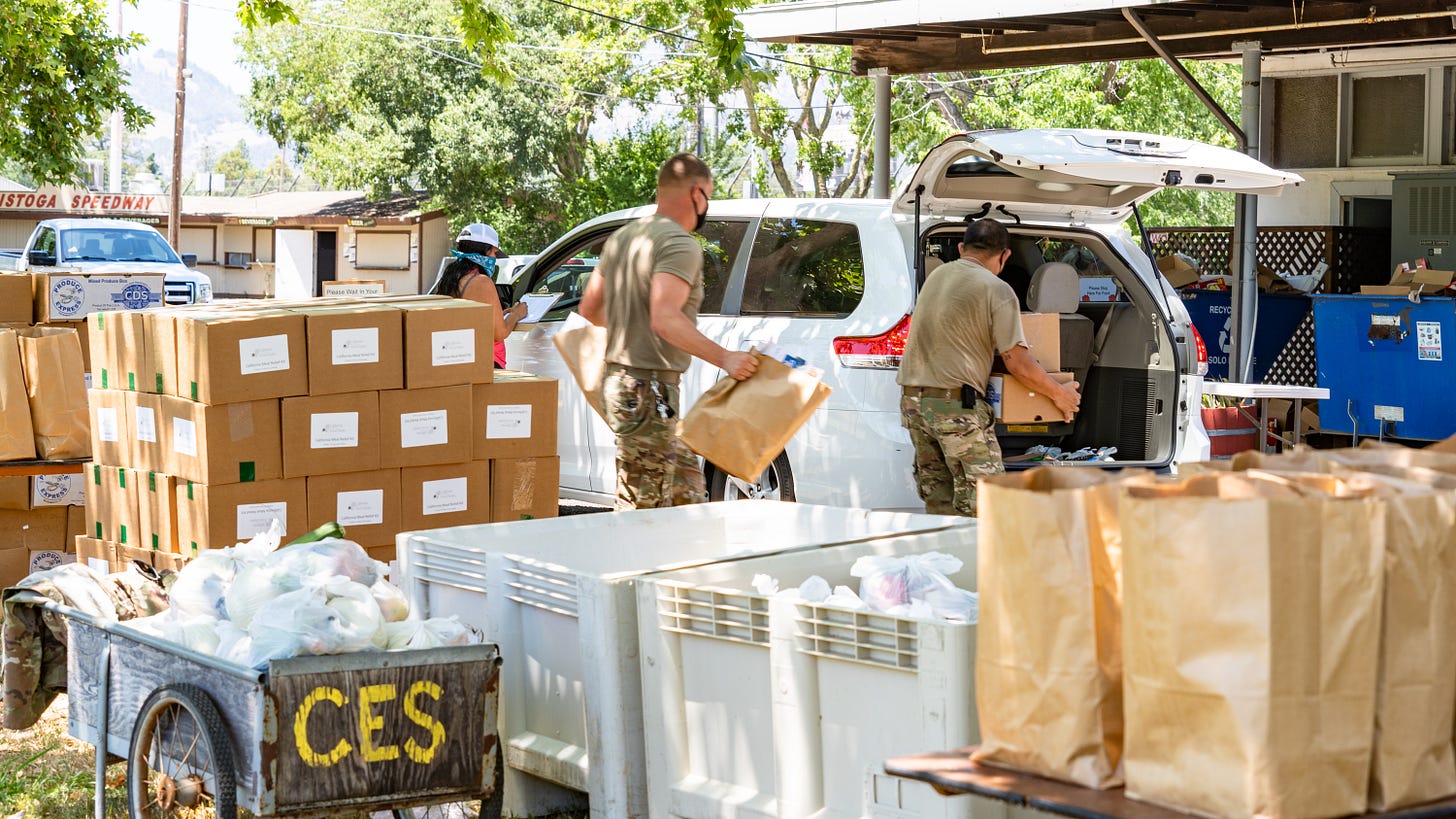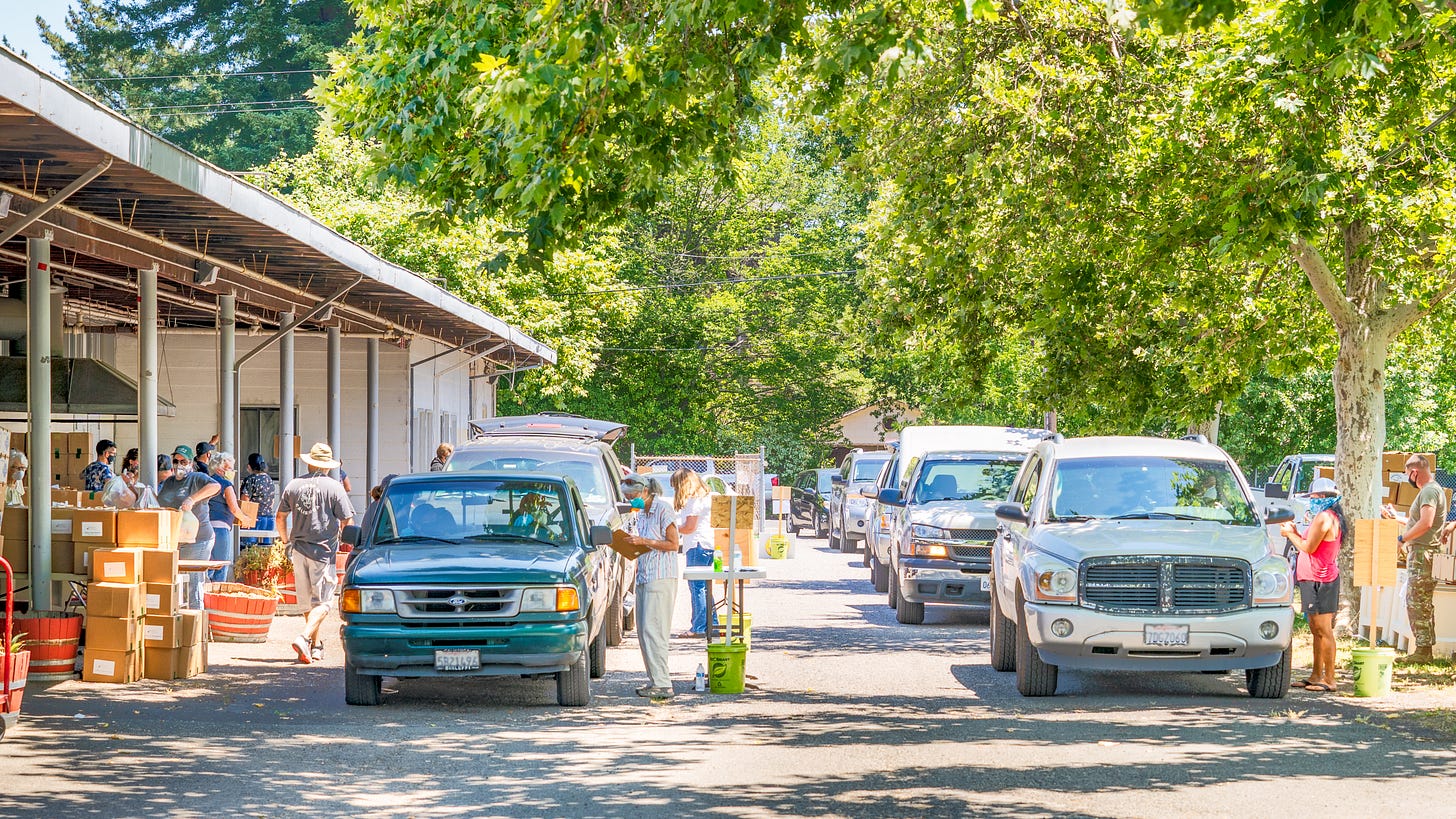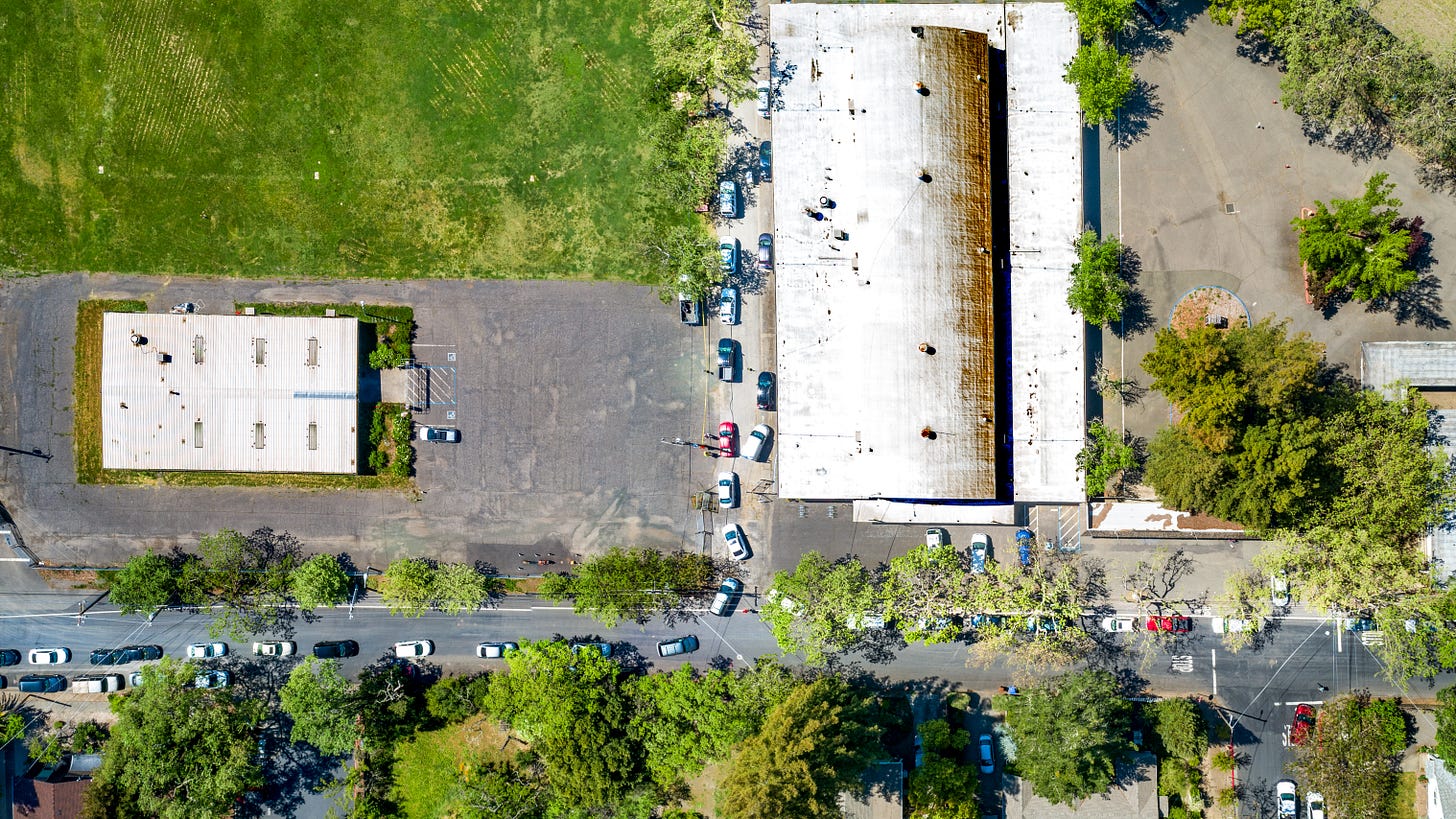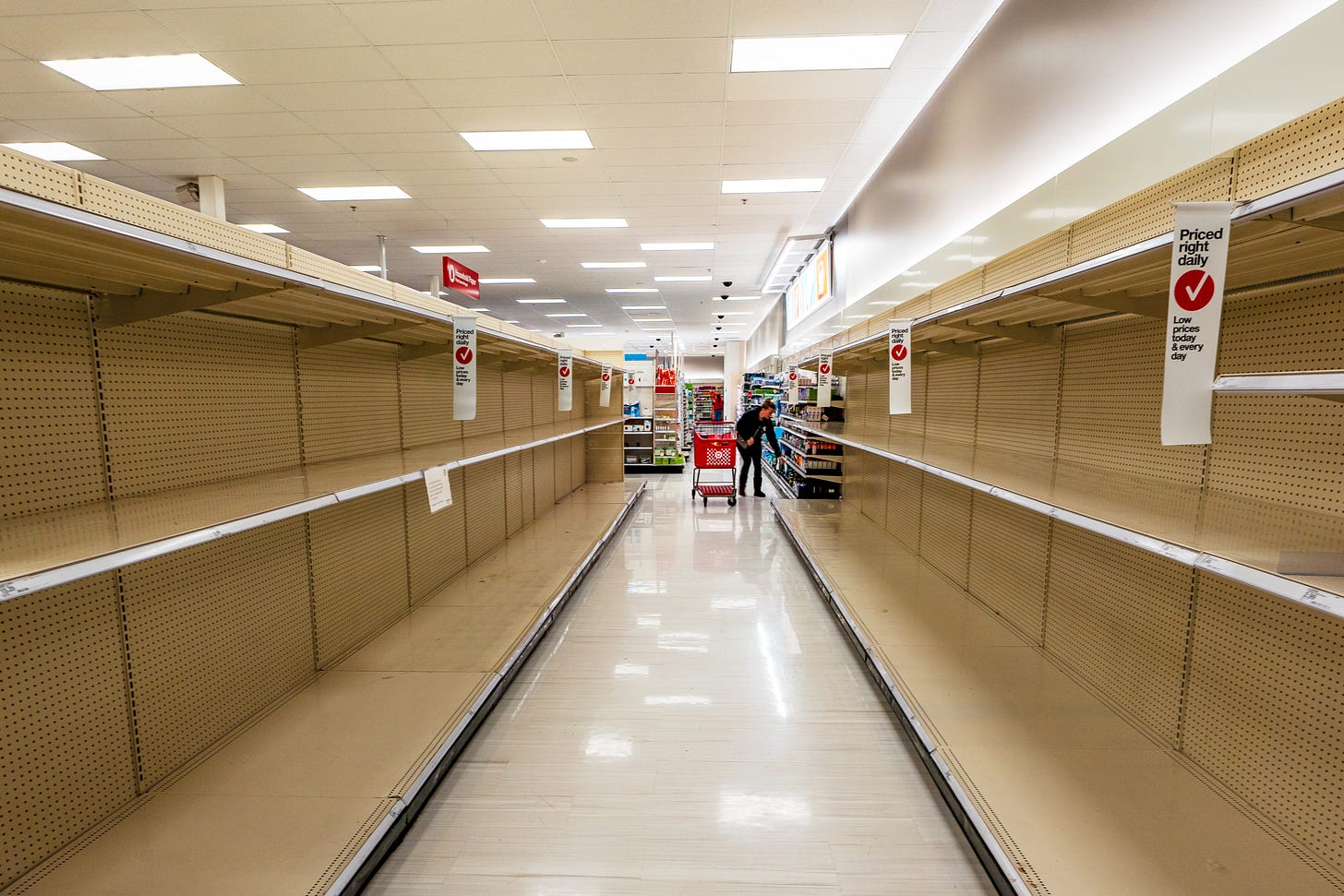Under the Hood: Food Insecurity in the Land of Plenty
A Napa County Program Struggles to Meet Rising Demand Amid Uncertain Funding Future
Support Local Journalism
If you're reading this, it's because you value independent, locally owned, ad-free reporting — journalism that prioritizes our region’s stories over corporate spin or clickbait.
Join others who care about in-depth, honest reporting by becoming a paid subscriber. If you’re already supporting us, thank you. You can help even more by sharing our work, leaving a comment or encouraging others to subscribe.
The Spotlight
Welcome to “Under the Hood,” our exclusive Saturday series for Napa Valley Features paid subscribers. Today we explore how rising costs, limited funding and growing need are straining food access programs across Napa County — even in a place known for abundance.
We’re also diving into the latest data from our readers’ polls and providing insights from our economic dashboard, covering local Napa Valley, U.S. and global markets.
In addition, we feature "What We Are Reading," a section with a handpicked list of recent articles that provides a variety of viewpoints on issues important to our community and beyond.
“What We Are Reading” quotes of the day:
"They brought in a lot of cash, they added all this flash, but there was no splash and the market was like, so what?" – from Michael Honig in "It looked like Napa’s most promising wine empire. What happened?" San Francisco Chronicle.
“We run out of food each time. At the end, people are turned away.” – Noemi Mauricio, RN, Mobile Health supervisor, St. Helena Hospital Foundation, today’s Under the Hood.
“It feels really good to have a permanent base when the political climate is making things harder for nonprofits and our community.” – from Genesis Monnet in "Immigrants are the backbone of Napa Valley’s wine industry. This major donation will help the fight to protect them," San Francisco Chronicle.
"… all points of sale of alcohol will have to post the warning: ‘Alcohol use can cause cancer, including breast and colon cancers." – from Andrew Gray, in "Alaska introduces cancer warnings to bars and liquor stores," The Drinks Business.
"One vineyard was recently sold for just €1." – from Michael Baynes in "Chinese owners offload Bordeaux estates as demand slumps," The Drinks Business.
“Our Wine and Spirits organic net sales declined 6%Foo as U.S. wholesale unfavorability, particularly across our largest mainstream and premium brands, was only partially offset by net sales growth in our international markets and direct-to-consumer channel.” – from Constellation Brands in "Fiscal Year and Fourth Quarter 2025 Earnings Release," Constellation Brands.
"We are honored to bring a newspaper of this quality into MediaNews Group." – from Frank Pine in "Investment firm buys Press Democrat and four other North Bay publications," San Francisco Chronicle.
“You’ll see that world in which, fundamentally, the world is fragmenting into blocks.” – from Peter Swartz in "Trump tariffs: World trade 'fragmenting into blocks,'" Just Drinks.
“The wines that contained the highest concentration of TFA, on average, were also the wines we found with the highest amount of pesticide residue.” – from Salomé Roynel in "‘Alarming’ increase in levels of forever chemical TFA found in European wines," The Guardian.
“The lawsuit claimed [Constellation Brands] spent over $668 million on stock buybacks at an artificially inflated price.” – from Chris Casey in "Constellation sued for allegedly misleading shareholders on wine sales," Food Dive.
“You’ve lost the momentum. You’ve lost the knowledge, and rebuilding it can take years to decades.” – from John Holdren in "Will U.S. science survive Trump 2.0?" Nature.
“This time there won’t be a vaccine coming to our rescue. We’re stuck with this chaos agent for three years and three months.” – from Paul Krugman in "Trump tariffs prompt slump in shipments to U.S. ports," The Guardian.
“Trump is the only president to have sub-50% average approval ratings during a first quarter in office.” – from Megan Brenan, in "Trump's First-Quarter Approval Rating Below Average, at 45%," Gallup.
“Despite last week’s rally, the S&P 500 Index is down about 8% since his inauguration and on track for its worst run during a president’s first 100 days since Gerald Ford in 1974.” – from "100 Days of Whiplash," Bloomberg.
“Without these grants, my career stability and professional future are directly jeopardized.” – from Xiao Wu in "Exclusive: a Nature analysis signals the beginnings of a U.S. science brain drain," Nature.
Food Insecurity in the Land of Plenty: A Napa County Program Struggles to Meet Rising Demand Amid Uncertain Funding Future
By Tim Carl
NAPA COUNTY, Calif. — On a Friday afternoon outside St. Helena High School volunteers from the Mobile Health team unload boxes of fresh produce onto folding tables. Even before setup begins, families are already in line — some arriving hours early.
“We arrive two hours prior to the start of the distribution as it takes time to unload, set up and organize everything,” said Noemi Mauricio, RN, Mobile Health supervisor with St. Helena Hospital Foundation. “When we arrive, community members are already in line waiting. That is when you know the need is great — when people wait for two hours to receive food.”
“We run out of food each time. At the end, people are turned away.” – Noemi Mauricio
What began in early 2023 as a small initiative to deliver fresh food to under-resourced neighborhoods has expanded into a vital food-security program reaching hundreds of families each month. While its current funding is secure, long-term sustainability remains uncertain.
A Finite Window of Support
The Food as Health program is funded in part through Napa County Agreement No. 240048B, a three-year grant awarded by the county under its Tobacco Master Settlement Agreement Fund. The contract, awarded in July 2023, provides $270,000 in total support ($90,000 per year through FY 2025–26) for both the Monthly Fresh Produce Distribution and a Senior Well-Being Program led by the St. Helena Hospital Foundation.
“This level of extra support for local nonprofits is unlike any other governmental organization I have seen,” said Jennifer Yasumoto, director of Napa County’s Health and Human Services Agency.
Supervisor Anne Cottrell expressed strong support for the program, noting that “[Adventist Health/St. Helena Hospital Foundation] does an amazing job in reaching residents in need and providing support” and that she’s “grateful for the partnership Napa County has with Adventist Health.”
And although the current grant runs through June 30, 2026, no future renewal is guaranteed. In the most recent MSA grant cycle, the county had $5 million in available funding but received more than $12.5 million in requests, leading program leaders to stress that continued growth in community need will require new sources of funding beyond the current term and level.
“We need to continue finding funding sources as the need grows more and more each day,” Mauricio said. “We can’t stop the program and leave the community without food.”
The Scale of What’s at Stake
The Mobile Health team now operates 44 food distributions each year, serving between 400 and 500 individuals per event. An estimated 100,000 pounds of fresh produce and pantry staples are distributed annually across Napa, St. Helena, and Calistoga.
Monthly stops: Calistoga (first Friday), St. Helena (second Friday), Napa (last Friday)
Quarterly stops: Napa High School and COPE Family Centers
Average demand: 400–500 people per event
Reality on the ground: There isn’t enough food to go around
“We run out of food each time,” Mauricio said. “At the end, people are turned away.”
A local food bank in St. Helena recently closed, placing even more pressure on the Mobile Health team. Demand continues to grow, with community organizations requesting new partnerships and more frequent service.
Countywide Indicators
According to Mauricio, the 2025 Community Health Needs Assessment from Adventist Health St. Helena found that:
22.35% of St. Helena residents suffer from low food access, compared to 13.29% statewide
61.5% of children in Napa County schools qualify for free or reduced-price lunch
53.46% of survey participants identified food access as a personal priority
While these statistics speak to the scope of the issue, they don’t fully capture its human toll.
“A dad told us that he is the only provider for his family — he works two jobs, but he can’t keep up with the bills, rent, school supplies and food,” Mauricio said. “The food we provide for him and his family makes a big difference in their home.”
A System Under Strain
The program also depends on Community Action of Napa Valley for fresh produce. Any disruption to CANV’s operations would affect Mobile Health’s ability to deliver food across the valley.
“We are seeing more and more first-time attendees as the cost of living is increasing,” Mauricio said. “We have fathers who go as they are the sole providers of their families and can’t afford nutritious foods.”
Rain or shine, the distributions continue.
“Community members show up with hope and happiness as they know they are arriving with empty bags that will be filled with fresh produce and staple goods,” Mauricio said. “As rain doesn’t stop hunger, neither does the team.”
Calistoga’s Food Bank Feels the Pressure
Mobile Health is not the only organization working to meet rising demand. Calistoga Cares Food Bank, a volunteer-run operation, distributes groceries twice a month to local residents. The group currently serves more than 20% of Calistoga’s population, reaching 360 households at its most recent distribution.
“About 60 to 65% of those we serve are families,” said Antoinette Mailliard, the group’s treasurer. “The rest are one- or two-person households — mostly seniors.”
Distributions are held on the second and fourth Thursday of each month from 2 to 5 p.m.
“We are now spending $2,500 a month on milk alone. If and when meat is cut off, we won’t be able to replace that without major additional funding.”
– Antoinette Mailliard
Calistoga Cares receives food from CANV, which consolidates U.S. Department of Agriculture and retail-donated goods for distribution across the county. But the organization has always purchased its own supplies to meet local demand.
“Even with USDA support, Calistoga Cares has always purchased some of its shelf-stable goods, dairy and produce from retail merchants,” Mailliard said. “As that support begins to fall off, we are now spending $2,500 a month on milk alone. If and when meat is cut off, we won’t be able to replace that without major additional funding.”
She estimates the cost to maintain current service levels would quadruple without significant outside support.
What Comes Next
To raise funds and awareness, the St. Helena Hospital Foundation will host its Neighborhood Table event this spring. All proceeds support the Food as Health initiative.
“The Neighborhood Table is more than an event — it’s a commitment to equity, equality and wellness in our community,” Mauricio said. “It’s a chance to gather with purpose and ensure that no one is left behind in a county known for its abundance.”
But the event alone won’t resolve the long-term challenge of ensuring stable funding.
“Join us in creating a stronger, healthier and more nourished Napa County,” Mauricio said. “Volunteer with the team and make an impact within your community. Donate to our program and make a difference. Help continue our Food as Health Program by attending the Neighborhood Table — your presence becomes food for someone in need.”
Event Details: Neighborhood Table in Downtown St. Helena
Saturday, May 17, 5 to 10 p.m. The St. Helena Hospital Foundation hosts its annual Neighborhood Table, featuring local food, wine, live music and community support for Mobile Health outreach and food security programs. Tickets are $250; sponsorship packages range from $3,000 to $50,000 with benefits including event tickets and recognition. For tickets, sponsorship or more information, visit their website or call 707-963-6208. Adams Street at Library Lane.
—
Tim Carl is a Napa Valley-based photojournalist.










